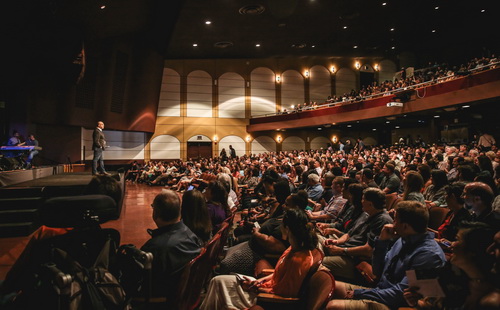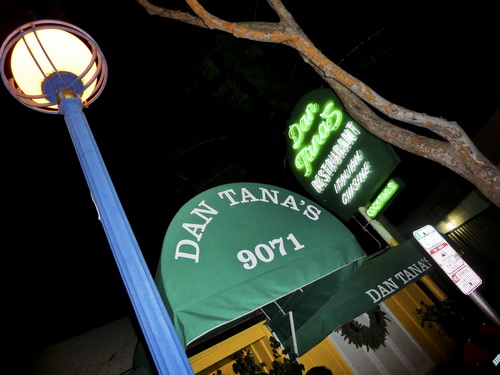Dunga Brook Diary: You Are Here

Where I Thought I Was
By Vicki Whicker
May 2011, Midnight, Central New York.
Finally, at Jim’s door. The Los Angeles to Albany flight topped by the three-hour drive (that should have taken two) has done me in. I’m exhausted. Shivering. And, it’s fucking dark. A billion stars in the sky but no moon DARK.
Jim’s beast is snorting and bellowing behind the door that I just knocked my knuckles raw on. The doorknob rattles and turns, crazily. I wish the headlights to my rental car were still on. I wish I’d arrived in broad daylight.
“JAX backup! JAX! Back! JAX! Goddammit!” Read more
Fellowship Monrovia, an evangelical church that makes its pop-up home at Monrovia High, finds followers come in all ethnicities and persuasions

By Mary Reinholz
First published in the Pasadena Weekly, December 21, 2017
Christian evangelists often get a bad rap, depicted in the media as right wing extremists who preach fire and brimstone to a lily white choir.
But those images of TV preachers like the late Jerry Falwell and Pat Robertson get turned on their head by Albert Tate, the charismatic African-American lead pastor and founder of Fellowship Monrovia, FM, a multi-ethnic pop-up church in the auditorium of Monrovia High School that is being touted as one of the fastest growing congregations in the San Gabriel Valley.
Tate, who once led the Sweet Home Church of Christ Holiness USA in his native Pearl, Mississippi, strides across the stage of the Monrovia High performing arts auditorium 36 Sundays a year, sometimes garbed in a black cassock or red trousers with a brown jacket or jeans and a sock hat. Sometimes he skips, sits down, stands up and breaks into song. Sometimes he thunders exhortations against “me-ism” and promotes the need for sinners to be humble and submit to God, shouting, “Make your bones with the Lord!” Read more
THE DAY I BECAME MY FATHER

My Dad would not be happy if he’d seen our check that day
By Bob Vickrey
After paying the tab at a local café and noticing my burger and fries came to an astonishing $17.50, I found myself mumbling to no one in particular, “I remember when hamburgers cost fifty cents.”
It was meant as a seemingly innocent comment about today’s rising cost of living, but instead, I heard echoes of my dad’s voice uttering a similar nostalgic theme many decades earlier.
After tossing a couple of bucks into the tip jar for my carry-out lunch, I walked out with my twenty dollar hamburger, realizing it had come from a modest counter-service cafe—not a Michelin four-star restaurant. Read more
REVELING IN THE NIGHT LIFE AT DAN TANA’S

photos by Barry Stein
By Bob Vickrey
Singer Ray Price once sang “The night life ain’t no good life, but it’s my life,” and it certainly appears that our monthly lunch club has adopted his famous motto in recent months.
After visiting The Galley in Santa Monica in November, we thought we should continue to visit famous L.A. restaurants that only open for business after dark. One spot that has been on our list is Dan Tana’s, the venerable West Hollywood Italian cucina and watering hole.
We forged into the cold, windy December night despite weather forecasts that had called for Southern California temperatures to plunge below the 70-degree mark. That kind of perseverance and dedication to our mission has become this group’s trademark. Read more
Honey and the second barrio of Los Angeles
NOTES FROM ABOVE GROUND
By Honey van Blossom
(Honey is a Belgian Marxist former strip-tease artiste)
As soon as a piece of a puzzle does not fit, then the rest of the pieces jiggle and come loose. Some pieces of the history of early Los Angeles jiggle.
William David Estrada, presently Curator of California and American History at the Los Angeles Natural History Museum, wrote that La Placita was built between 1818-1822 on the plaza’s third site; that is, that the settlers or the government moved the plaza from the original site to another site to the Olvera Street location.[1]
That statement is one of the few about the history of early Los Angeles that makes a lot of sense. The Spanish Colonial records were destroyed, H. H. Bancroft’s team of researchers did a tremendous job of copying and attempting to organize – they did not organize all that well; it is hard to this day to understand the organization but Thomas Savage and his assistants spent two years with paper anarchy. There was no survey of Los Angeles until 1849 and no map since about 1793. No one had a deed to his property. Property descriptions were impossible to understand because they referred to things like the orchard where the cows ate the apples. Later writers turned information on its head and because they saw things through preconception and wearing American blinders, they mystified by the beginning of Los Angeles.
That Dr. Estrada figured out there was a second barrio after the original plaza and its surrounding buildings and before there was the plaza in front of the Catholic church near Olvera Street is impressive. Read more



